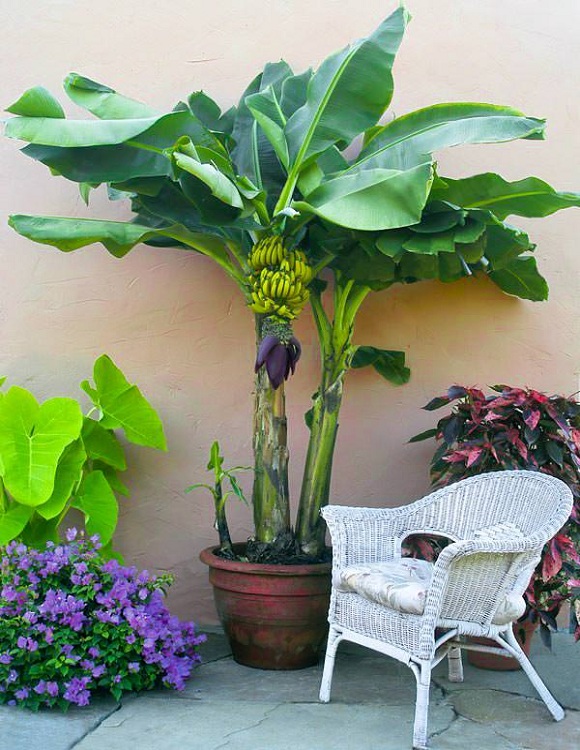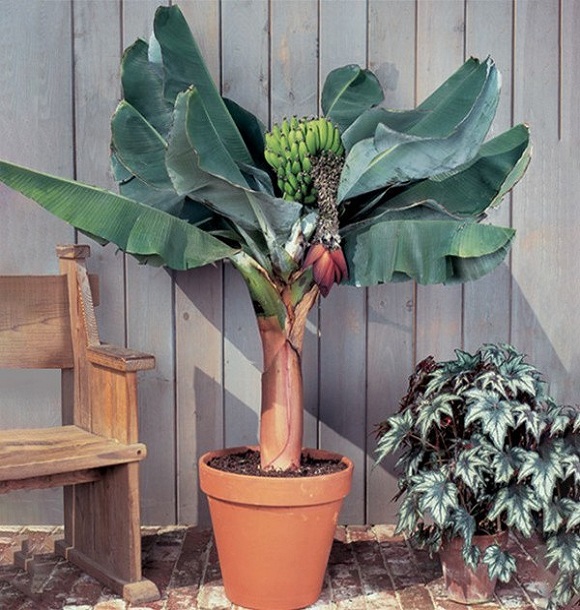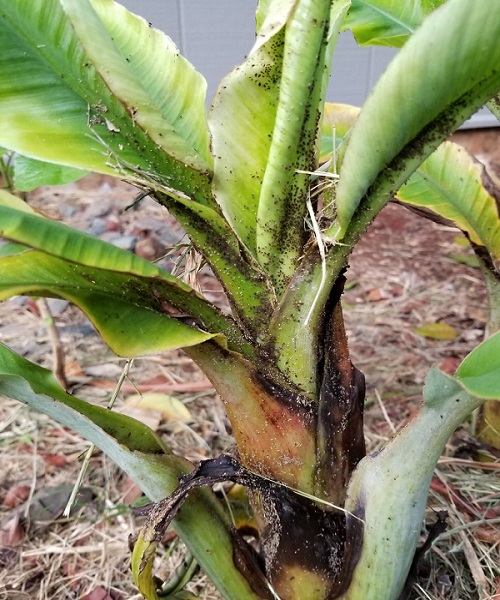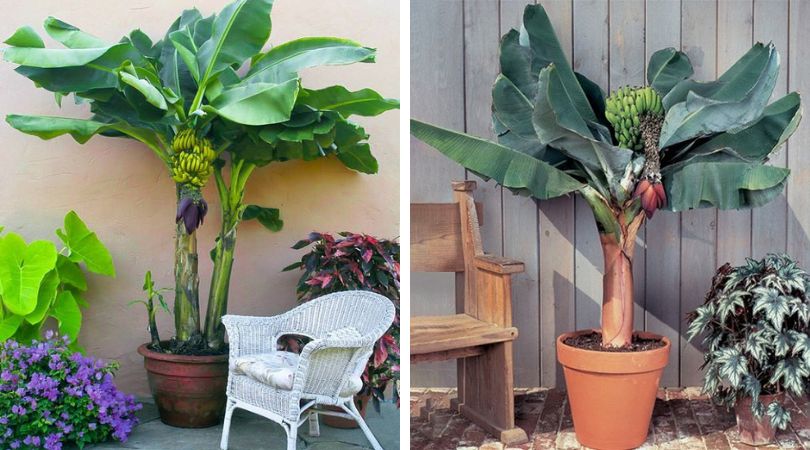Consider growing bananas in containers instead of planting them in the ground if you do not have enough room for planting them or live in an area with a chilly environment.
Here’s how to grow banana trees in containers.
Growing banana trees in containers
Bananas are a fast-growing, tropical-looking plant with luscious green leaves that can transform any space. A variety of bananas can be grown as easy-to-care-for houseplants that soon reach dizzying heights.
Banana trees that are referred to as “dwarf variants” can only grow between 2 and 4 meters in height, but the typical banana tree can grow to a height of up to 15 meters.

Container gardening for tropical climates: banana trees
In a tropical climate, it is simple to grow a banana tree in a container because it requires little to no attention. During the summer, keep your young banana tree in the shade if you live in USDA Zones 9 to 11. The rest of the specifications are the same as those that apply to regions with a temperate climate.
This is a list of bananas that may be grown in containers or indoors:
Dwarf types of banana trees can be grown in containers because they grow to only 1.5–4 m (4–12 ft) tall. Bananas can also be grown inside with the following varieties:
- Dwarf Red
- Dwarf Cavendish
- Dwarf Brazilian
- Dwarf Jamaican
- Rajapuri
- Williams Hybrid
- Gran Nain
- Dwarf ‘Lady Finger’
When it comes to growing bananas as an ornamental, here are several options to consider:
Alternatively, if you’d rather plant bananas for their aesthetic value, take a look at these options:
- Ensete ventricosum
- Musa sikkimensis – ‘Red Tiger’
- Musa ornata
There are a few things you need to know before you start growing your bananas in pots.

The Soil
In order to grow bananas, you’ll need sandy soil that drains well and is rich in organic matter and compost. Get your banana tree some good planting soil first. Sand, perlite, and compost or manure should all be included in the mix if you’re producing it yourself.
In order to grow delicious and nutritious bananas, the banana requires slightly acidic to neutral soil. The pH of the soil should be between 6 and 7 Nevertheless, if your soil is very alkaline, you should add sulfur into the mix to lower the pH value.
Watering
Bananas are moisture suckers. To avoid overwatering, be sure to give the banana plant regular, deep watering.
Follow these guidelines:
- In the summer, water the banana plant daily.
- In warmer weather or when the roots are confined, it may be necessary to water twice daily.
- Banana plants can thrive in soil that is kept evenly moist, so don’t allow it dry up and then overwater it.
- To avoid disease, cut back on plant watering in the winter.
Sun Exposure
In the tropical and subtropical zones of the world where banana trees are found, full sunlight, heat, and humidity are ideal conditions for the growth of bananas. If you want to plant a banana tree, choose a location where it will get plenty of sunlight, but also be protected from high winds.
How to give extra attention to a banana plant in a pot
Humidity
Higher humidity levels are preferred by banana plants. By spraying the plant with water and setting it in a tray with pebbles, you can raise the humidity level surrounding it.
Overwintering bananas in a container
When the temperature dips below 10°C (50°F), banana plants cease developing. So, conduct some heavy mulching and cutting of the leaves prior to the advent of winter. Wait until spring to put it in a light, warm room.
Fertilizing
Due to its rapid growth, the banana necessitates heavy feeding to reach its full potential. Nitrogen-rich fertilizer can speed up the growth of a newly established plant. You should fertilize your banana tree using 15:5:30 fertilizer once it’s in the container until it’s big enough to produce fruit.
Diseases & Pests
Bananas have a high level of disease resistance built-in. Even so, if you notice the leaves turning brown and drying up around the edges, you’ve overwatered the plant and should stop. The yellowing of the banana plant’s leaves indicates a shortage of nutrients.
The banana aphid, the banana weevil, and the coconut scale are all potential banana pests. Organic insecticides, on the other hand, are an easy way to keep these pests at bay.


